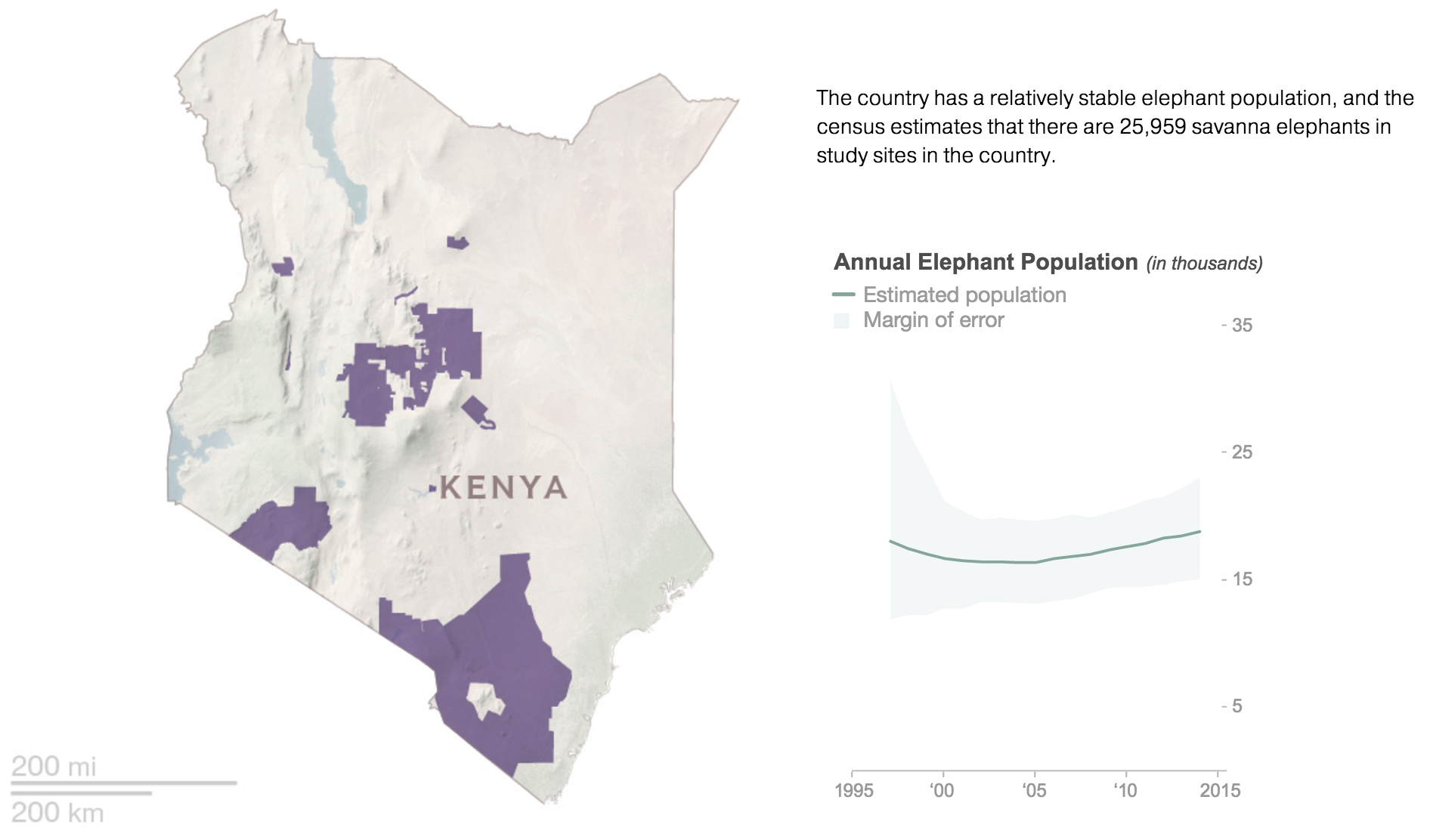The Great Elephant Census – It took under 3 years to complete and was led by Botswana based Elephant Without Borders with 6 NGOs, 90 scientists and two advisory partners. It is the largest continent wide wildlife survey and was released at the beginning of this month at the World Conservation Congress in Hawaii. What did they find?
“Africa now has 352,271 savanna elephants left in 93 percent of the species’ range. The aerial survey covered 18 African countries. In 15 of those, where information on previous populations existed, 144,000 elephants were lost to ivory poaching and habitat destruction in less than a decade. The current yearly loss—overwhelmingly from poaching—is estimated at 8 percent. That’s about 27,000 elephants slaughtered year after year.” – NatGeo
The census was done using low flying planes zig-zaging through the sub-Saharan African landscape. They flew a combined distance of 285,000 miles. That distance is the same distance from Earth to the moon and a quarter of the way back. A. LOT. OF. FLYING.
Below are the results of the 2014-2015 Census in Kenya via NatGeo. Its numbers were considered stable compared to other places like Tanzania or Mozambique.

Although the overall result is looking quite sombre for the Elephant population, it greatly varies from country to country and throughout different ecosystems. For example…
“Angola too gave a shock. Once hoped to be a refuge for elephants after decades of civil war, it now has one of the highest poaching rates on the continent—leading to a 22 percent drop in elephant numbers since 2005.” – NatGeo
The census gave researchers a clear look at how the current state of poaching resides within Africa..
“What’s abundantly clear, is that the elephant poaching crisis has moved from East and central Africa and is now on our doorstep in southern Africa. You just need to look at southwest Zambia and southeast Angola, which have the worst rates of elephant poaching on the entire continent. And when elephants are removed from those systems, poachers will look to the stronghold of northern Botswana.”
The overall message of the survey is clear. Poaching is so intense “that in 10 years’ time we could lose 50 percent of Africa’s remaining elephants.”” – Mike Chase (Princial Researcher & Founder of Elephants without Borders)
These aerial counts prove to be crucial in providing the data researchers need in order to learn how a species’ population is progressing or digressing within each ecosystem. The MWCT aerial count is well under way and is scheduled to take place next week!
To learn more on the Great Elephant Census you can visit: http://www.greatelephantcensus.com/


